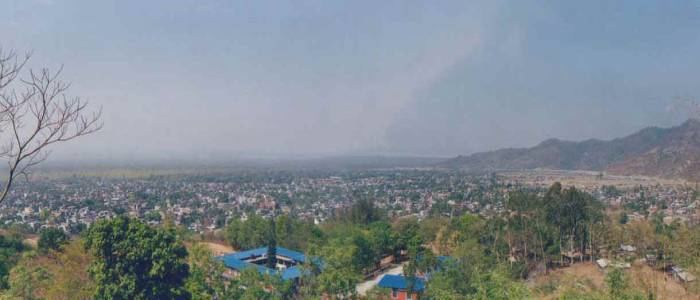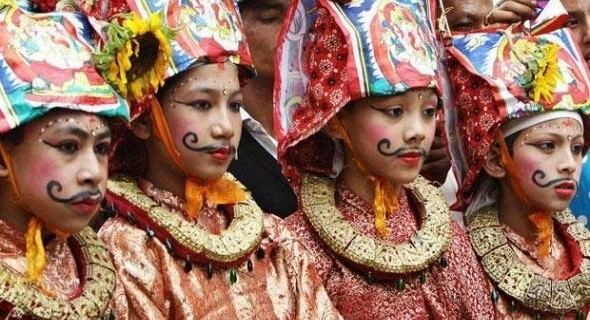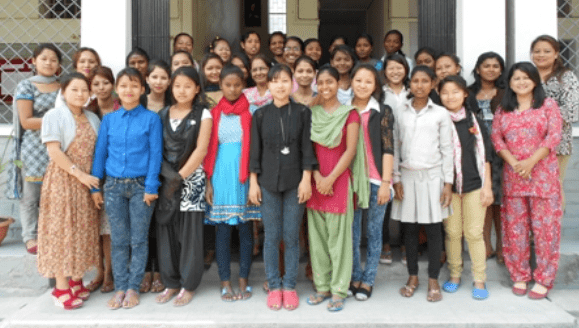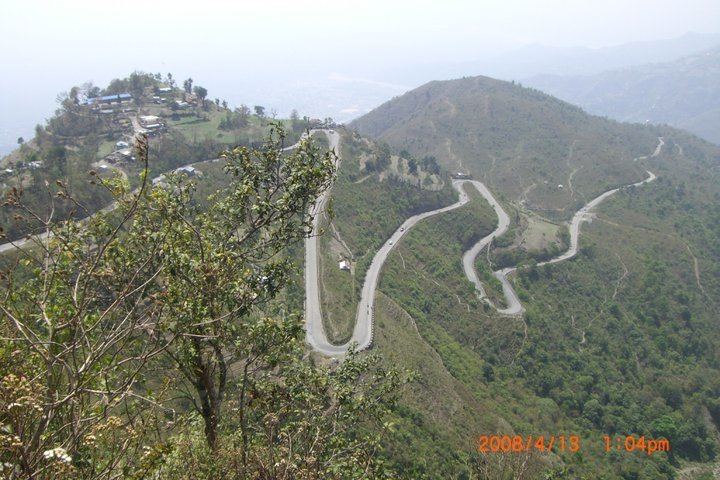Country Nepal University B.P. Koirala Institute of Health Sciences Area 50.8 sq mi | District Sunsari District | |
Dharan (Nepali: ) is a major city, one of three Sub Metropolitan cities in eastern Nepal, in the Sunsari District, and is situated on the foothills of the Mahabharat Range in the north with its southern tip touching the edge of the Terai region at an altitude of 1148 ft (349m). It serves as a trading post between the hilly region and the plains of Terai region. It was once the location of a recruitment center for the Brigade of Gurkhas, opened in 1953. The recruitment center is closed and the campus is now the home of B.P. Koirala Institute of Health Sciences since 1993. Dharan Sub-metropolitan city organised a Golden Jubilee celebration of Dharan from January 28 to January 31, 2011 marking the 50th year of establishment of the municipality.
Contents
Map of Dharan, Nepal
History
The Ten Kings of Limbus came together to formally declare all the ten kingdoms between the Arun River and Teesta River to be called "Yakthung Laaje".

The ten rulers, their kingdoms and their forts:
- Samlupi Samba Hang, King of Tambar and his capital Tambar Yiok.
- Sisiyen Shering Hang, King of Mewa and Maiwa kingdoms and his capital Meringden Yiok.
- Thoktokso Angbo Hang, King of Athraya and his capital Pomajong.
- Thindolung Khokya Hang, King of Yangwarok and his capital Hastapojong Yiok
- Yengaso Papo Hang, King of Panthar and his capital at Yashok and Pheden (Phe meaning "plain", den meaning "place").
- Shengsengum Phedap Hang, King of Phedap and his capital at Poklabung.
- Mung Tai Chi Emay Hang, King of Ilam and his capital at Phakphok.
- Soiyak Lado Hang, King of Bodhey (Choubise) and his capital at Shanguri Yiok.
- Tappeso Perung Hang, King of Thala and his capital at Thala Yiok.
- Taklung Khewa Hang, King of Chethar and his capital at Chamling Chimling Yiok.
After a brief period, King Mawrong Hang came to prominence and took over Terai lands of Chethar, Bodhey, Panthar and Ilam (present day Jhapa, Morang Sunsari and Dhankuta). He named his Kingdom Morang after his name and rose to power. He subdued all the Ten Limbu Kings of Limbuwan and became their overlord. He died without any male heir and King Uba Hang took over as supreme ruler of Limbuwan in 849 AD- 865 AD. He made many religious and social reforms in Limbuwan. Uba Hangs worthy son Mabo Hang succeeded him in 865 AD and ruled till 880 AD. Uba hang kept on with the reforms his father had started. Uba Hang was succeeded by his son Muda Hang. Muda Hang was a weak ruler so the local chiefs started ruling their areas independently. Muda Hang was succeeded by his son Wedo Hang, by this time Limbuwan was in chaos and every principality was ruling independently and fighting with each other. Wedo hang was murdered and his son Chemjonghang succeeded.
During this chaos and the waning phase of King Chemjong hang, King Sirijonga of Yangwarok kingdom rose to power. He subdued all the independent rulers and took over as the new supreme ruler of Limbuwan. He built two big forts in Phedap (present day Terhathum district) and Chainpur (present day Sankhuwasabha district). The remains of the structure still stand today. One of legacy was that he brought all the Limbus under the same writing system in Kirat script. He also brought feudal reform in Limbuwan and divided Limbuwan into new boundaries and districts.
Eventually after the establishment of Namgyal dynasty in Sikkim and under the Lho-Mehn-Tsong Tsum, a treaty between the Bhutia, Lepcha and Limbu people of the Sikkim area, Limbuwan lost the area between Kunchenjunga range (present day eastern border of Nepal) and Teesta River to the Bhutia Kings of Sikkim. Since then Limbuwan comprises all the area between Arun River and Koshi River in the west to Kunchenjunga Mountains and Mechi River in the east.
In the beginning of 15th century, the descendants of King Sirijonga became weak and Limbuwan again fell into chaos and anarchy. At the time Lowland Limbuwan Kingdom of Morang was ruled by King Sangla Ing. Sangla Ing declared independence and became the first independent ruler of Morang in a century. His son Pungla Ing adopted Hinduism and changed his name into Aamar Raya Ing. He was succeeded by his descendents, who also bore Hindu names. Kirti Narayan Raya Ing, Aap Narayan Raya Ing, Jarai Narayan Raya Ing, Ding Narayan Raya Ing, and Bijay Narayan Raya Ing.
King Bijay Narayan Raya Sanlga Ing built a new town in the middle of Varatappa and Shangori fort and named it Bijaypur after him. He had no issue and died without an heir.
Bijaypur town was founded in 1584 AD and is currently located next to Dharan, Sunsari District. Bijaypur town remained the capital of Morang Kingdom and Limbuwan region until the Gorkha Limbuwan War in 1774 AD.
It was the most powerful and influential of all the Kingdoms in Limbuwan region and was able to establish its hegemony among all the other Limbu rulers. But in 1609 AD Kirant King Lo hang Sen of Sen dynasty captured Morang and ruled it for seven generations.
King of Phedap Murray Hang was made the chief minister of Morong. He stayed in Bijaypur and the King of Morong made his post hereditary. Murray Hang was given a Hindu name and he became Bidya Chandra Raya . His descendents remained Chief Ministers of Morong until Buddhi Karna Raya . Buddhi Karna Raya succeeded the last Sen King of Morang Kama Datta sen and sat in the throne of Bijaypur Palace in 1769 AD.
Culture

Dharan is a melting pot of many cultures, representing a mix of diverse cultures of Nepal. There are many people from the surrounding district, Sankhuwasabha, Tehrathum, Ilam, Panchthar, Dhankuta, Bhojpur, Taplegung Khotang etc., who live in Dharan.

Different ethnic groups host their traditional cultural festivities all year around. The Dhan naach (Dance) and Chyabrung naach (Dance) of Limbus, Lakhe naach (Dance) and Gai jatra of Newars, Sakela of Rai, Selo of Tamangs, Rodighar of Gurungs, Baalan and Sangini of Brahmin and Chhetris, all add to the cultural tradition of Dharan. Dharan also hosts a Sakela competition in Dharan every year. It starts from the Baisakh Sukla Purnima (Full moon of day of the month of Baisakh) and lasts for 15 days.
Attractions in Dharan and nearby
Dharan is a tourist destination in its own right. Communication is mainly in Nepali and English. People who are English speakers should have no problem comprehending many signs and road maps in Nepal.
Beyond Bhedetar lies the eastern hilly district such as Dhankuta, Bhojpur, Phidim, Terathum. Dharan serves as a gateway to some of the remote tourist attractions like Kumbhakarna Himal, Kanchenjunga, Makalu Barun National Park, Arun Valley, Tinjure-Milke (Rhododendron Protection Area), Gupha Lake, Hyatrung Fall, and Sabha Pokhari. They are quite further and therefore require extended day trips.
To the south of Dharan is the city of Biratnagar and connecting towns, all within an hours drive. The towns of Tararah and Itahari are popular with the local population of Dharan.
Dharan, with its diverse population has numerous centers of worship i.e. temples, churches and a mosque. Bijaypur hill is of a particular significance, as it has several temples of importance, such as Dantakali temple, Pindeshwar temple, Budha Subba Temple and Panch Kanya. These temples are of historical and archaeological importance in as much as religious. These temples are centers for rituals, fairs and events.
In recent years the close proximity of the Tamur River has made Dharan a destination for the white water rafting enthusiasts, Which is start from Mulghat of Dhankuta district and finish in Chatara Ghat.
Other potential tourism prospects include:
Some measures taken by the Municipality of Dharan to promote tourism:
Geography and climate

